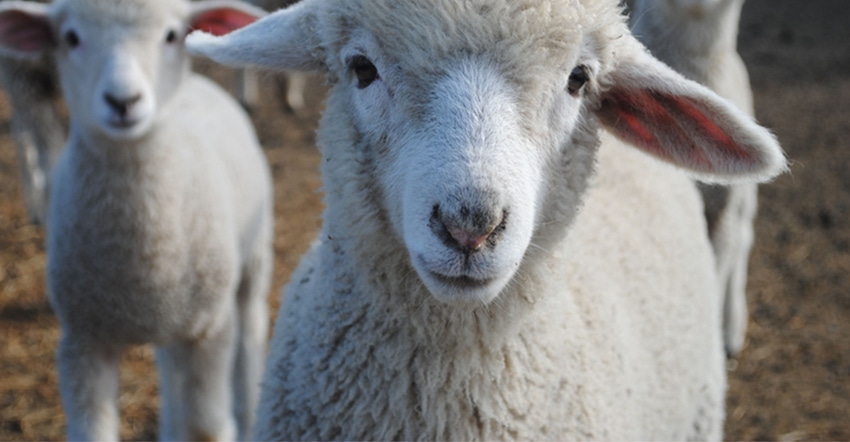
Sheep numbers in Nebraska saw a fairly substantial increase in 2016. In the annual sheep and goat inventory report released by the USDA Agricultural Statistics Service for Nebraska in January, the all sheep and lamb inventory was 83,000 head, which is up 3000 head over 2015. The breeding sheep inventory alone was up 4,000 head over the previous year, with the total replacement lamb numbers up by 1,000, totaling 10,000 head. The milk goat inventory was also up by 500 head, totaling 3,700.
Verdigre farmer Kiley Hammond is the new president of the Nebraska Sheep and Goat Producers Association. Hammond has been raising sheep for more than 30 years, finishing and selling primarily market lambs. He also worked as a sheep and goat order buyer for more than 10 years. "Nebraska actually has a long history of sheep production," Hammond says. "At one time there were five sheep packers in Omaha. Farmers in the state used to feed a lot of lambs, purchasing them from growers in the Dakotas and bringing them here to finish out." Historic agriculture statistics back Hammond's claim, with USDA reporting 689,376 head of total sheep and lamb inventory in 1935, for instance.
Because sheep and goat production requires less of an investment in capital to get started, there is a high profit potential with good management, Hammond says. "Feeding lambs works in Nebraska today, too, because the largest of the packers is close by in eastern Colorado," he says. "Sheep and goats also fit smaller operations well, because less equipment is required."
Growers can make use of waste acres, empty feedlots or cover crops for sheep grazing. "A lot of farmers are looking at diversifying their existing livestock operations by adding sheep and goats," Hammond explains. "There is good support and lots of information out there on how to graze in addition to cattle grazing. Sheep and goats can help in management of pastures, by cleaning up leafy spurge, buckbrush and broadleaf weeds."
The market prices have been pretty reliable, Hammond says. In many cases, market lambs have been selling in the $1.50 to $1.75 per cwt range. "It's been at a pretty sustainable price," he says. "The only obstacle is that markets are a little sparser. We have a market in Verdigre now, and there are markets around the state, but sometimes you have to travel a little bit to market lambs."
Growing and mentoring new producers is part of the outreach program of the Nebraska Sheep and Goat Producers Association. "We have a mentoring program for new producers to match them with a veteran producer who follows up with them and helps with initial management," he says. "We also are sponsoring a spring tour near Ravenna where growers can learn from hands-on instruction." The group will tour Brooks Duester's large lambing and feedlot operation. They will also participate in shearing, lamb and kidding care and management, foot care, vaccination protocols, and feeding of market lambs and goats discussions and demonstrations.
If you'd like to attend the spring tour or learn more about Nebraska's sheep and goat industry, visit the NSGPA website at nebraskasheepandgoat.org.
About the Author(s)
You May Also Like






